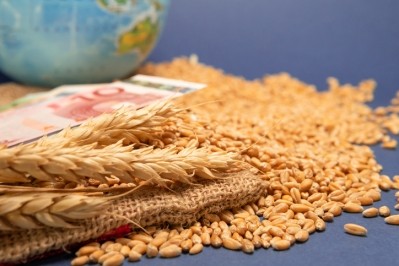Agri-commodity market tracker: Global grain prices react to escalating tensions and weather concerns

There were fears of further escalation by Russia, driven by President Vladimir Putin's perceived mandate post-re-election, and retaliatory strikes following Ukrainian assaults on Russian oil refineries, according to a CRM Agri report.
In response, wheat futures for May-24 surged by 2.0% in Chicago and rose by 1.0% in Paris, surpassing their 20-day moving average. London feed wheat for May-24 climbed by 1.2%. Additionally, Russian FOB wheat export prices rebounded last week, exceeding $200/t for the first time since early January. Algeria's re-entry into the wheat market signaled sustained importer interest at prevailing prices, countering soft US wheat export data and a drop in Chinese wheat imports, noted the analysts.
Last Thursday, the International Grains Council (IGC) provided initial forecasts for 2024/25, predicting major exporters' wheat stocks to shrink again next season, falling below 60Mt for the first time in four years.
Corn prices, planting
The strength in wheat also bolstered corn prices, which edged up by 0.2% for May-24, despite pressure from favorable South American weather forecasts. Increased corn imports by China in January and February, along with rising US corn exports, further supported the market, reads the CRM Agri outlook.
Corn planting has commenced in some southern US states, like Texas, where about one-quarter of the planting is complete. However, the main planting period begins around the start of April in the Midwest. Early indicators raise concerns, with dry conditions in Iowa spreading through the western Midwest, potentially exacerbated by the rising likelihood of La Nina, which tends to encourage Midwest droughts. This situation warrants a risk premium. Similarly, Brazil's newly sown safrinha corn crop may also require risk premium due to prolonged dry spells, especially in Mato Grosso, ahead of the dry season starting in April, commented the UK grain market specialists.
Reduced rapeseed production in Europe
Looking to oilseed activity, and the analysts see that soybean prices dipped by 0.4% for May-24, influenced by forecasts of rainfall in Argentina and Brazil, while in Paris, rapeseed futures for May-24 gained 1.7%, driven by worries over reduced EU production and declining sowings in Canada, where dryness added to concerns.
Under the weather
Assessing likely weather patterns, the analysts say that further rain is forecast for parts of western Europe, particularly southwestern and central France, and the western UK, over the next week. However, other areas, including northern France and most of England, are expected to remain dry.
In the US, rains will favor the western Midwest initially, before moving eastwards towards the end of March. In South America, heavy rains are predicted for central Brazil, the southern region, and northern and eastern Argentina over the next week, with a shift to central growing regions later. Soil moisture levels in Brazil are notably low, though crop conditions remain strong according to NDVI scores, they added.














